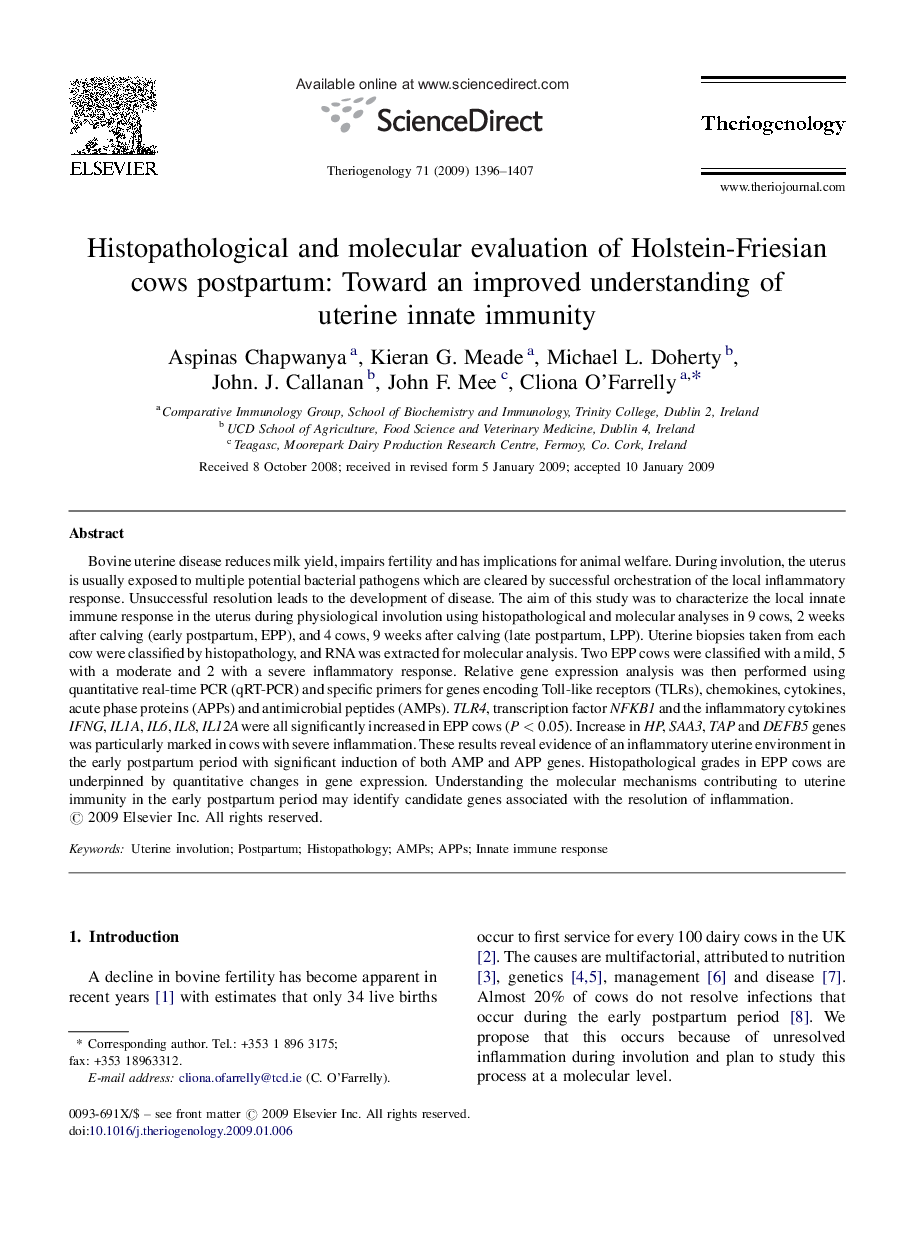| Article ID | Journal | Published Year | Pages | File Type |
|---|---|---|---|---|
| 2098065 | Theriogenology | 2009 | 12 Pages |
Bovine uterine disease reduces milk yield, impairs fertility and has implications for animal welfare. During involution, the uterus is usually exposed to multiple potential bacterial pathogens which are cleared by successful orchestration of the local inflammatory response. Unsuccessful resolution leads to the development of disease. The aim of this study was to characterize the local innate immune response in the uterus during physiological involution using histopathological and molecular analyses in 9 cows, 2 weeks after calving (early postpartum, EPP), and 4 cows, 9 weeks after calving (late postpartum, LPP). Uterine biopsies taken from each cow were classified by histopathology, and RNA was extracted for molecular analysis. Two EPP cows were classified with a mild, 5 with a moderate and 2 with a severe inflammatory response. Relative gene expression analysis was then performed using quantitative real-time PCR (qRT-PCR) and specific primers for genes encoding Toll-like receptors (TLRs), chemokines, cytokines, acute phase proteins (APPs) and antimicrobial peptides (AMPs). TLR4, transcription factor NFKB1 and the inflammatory cytokines IFNG, IL1A, IL6, IL8, IL12A were all significantly increased in EPP cows (P < 0.05). Increase in HP, SAA3, TAP and DEFB5 genes was particularly marked in cows with severe inflammation. These results reveal evidence of an inflammatory uterine environment in the early postpartum period with significant induction of both AMP and APP genes. Histopathological grades in EPP cows are underpinned by quantitative changes in gene expression. Understanding the molecular mechanisms contributing to uterine immunity in the early postpartum period may identify candidate genes associated with the resolution of inflammation.
